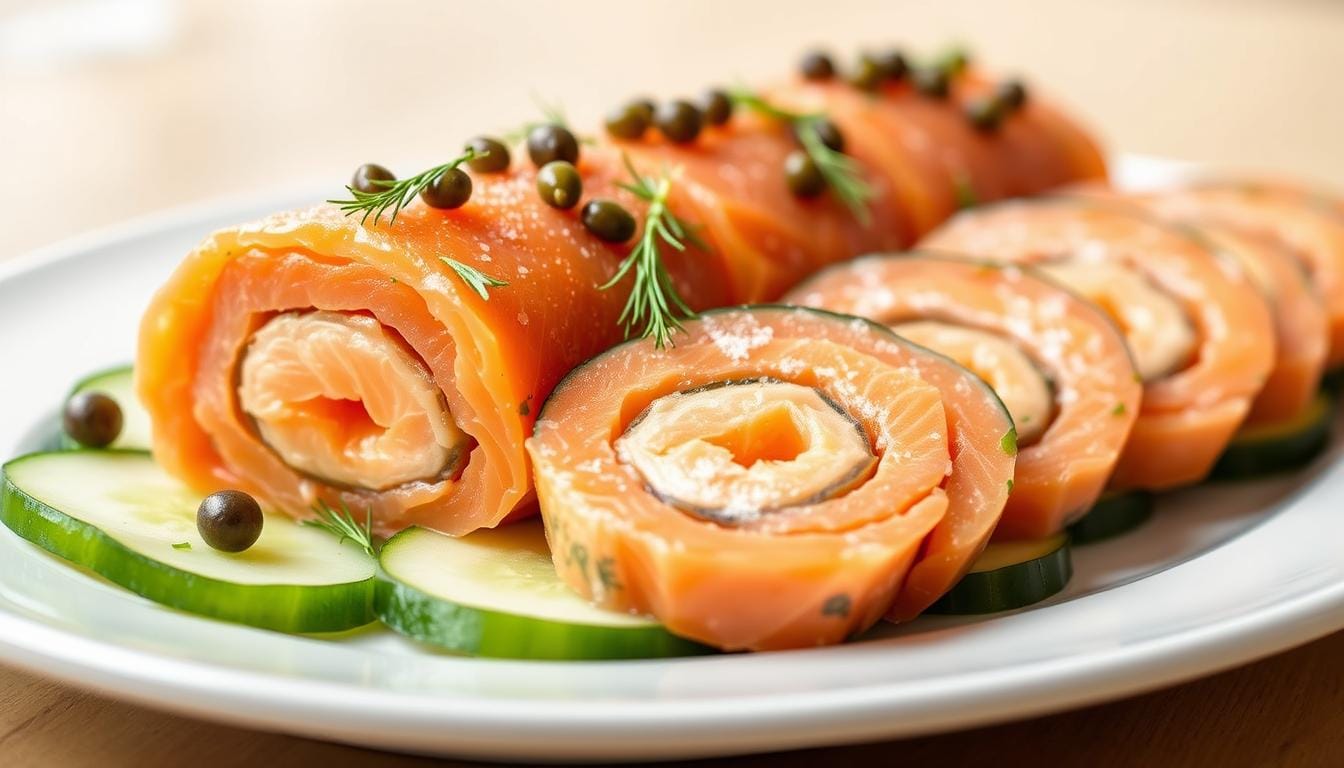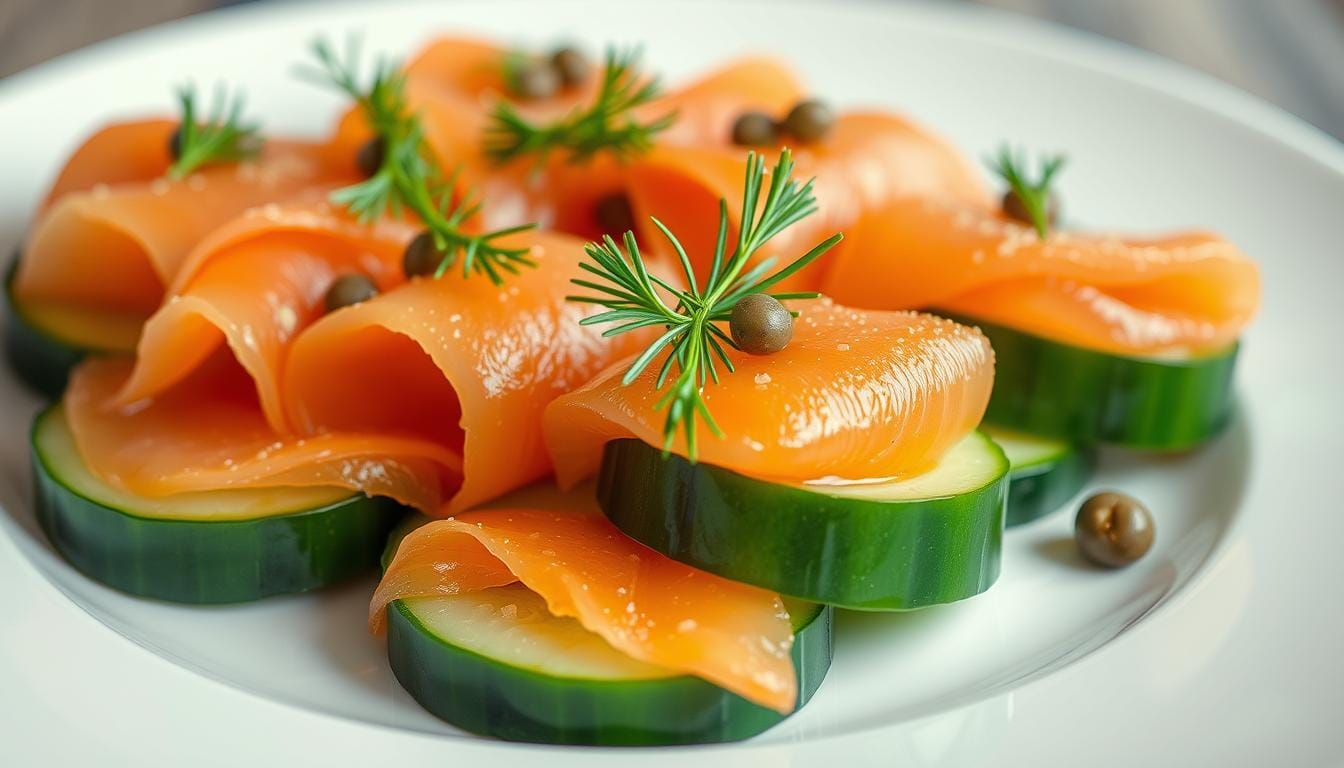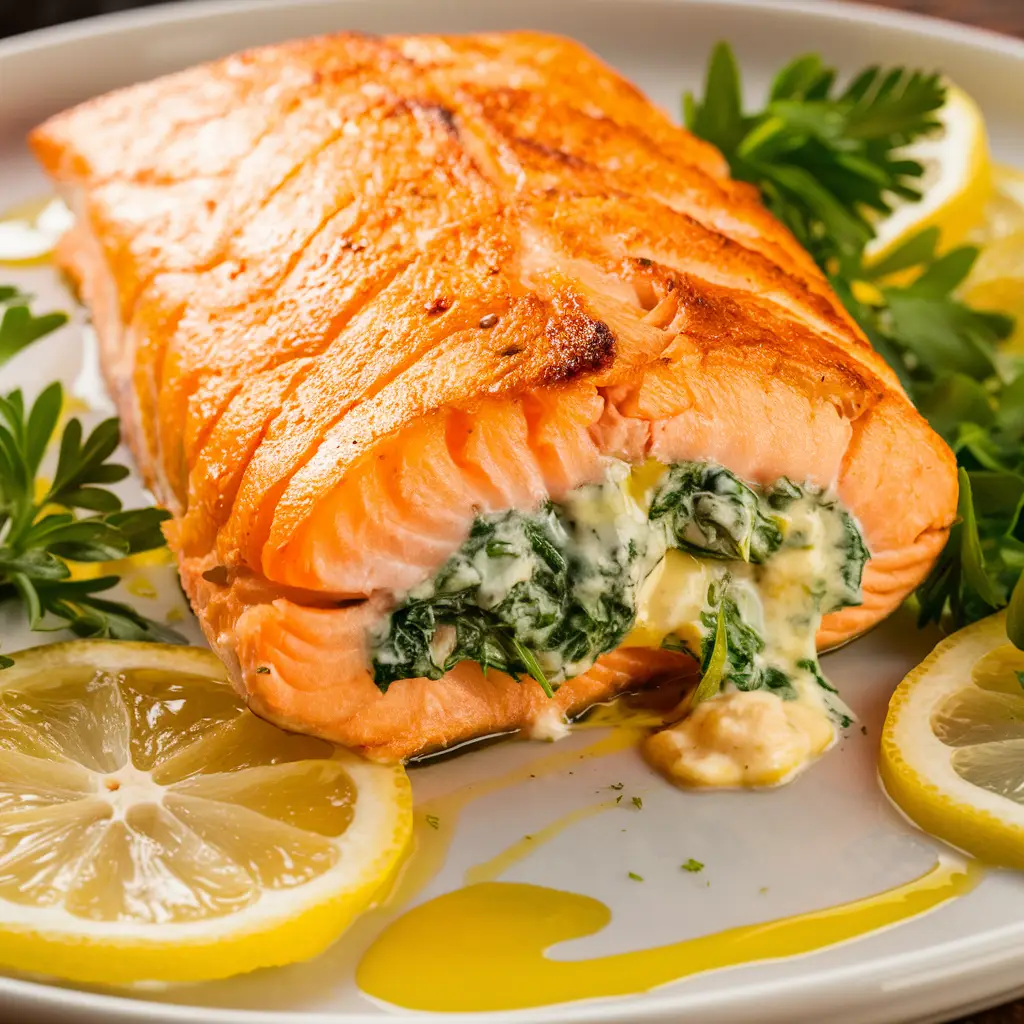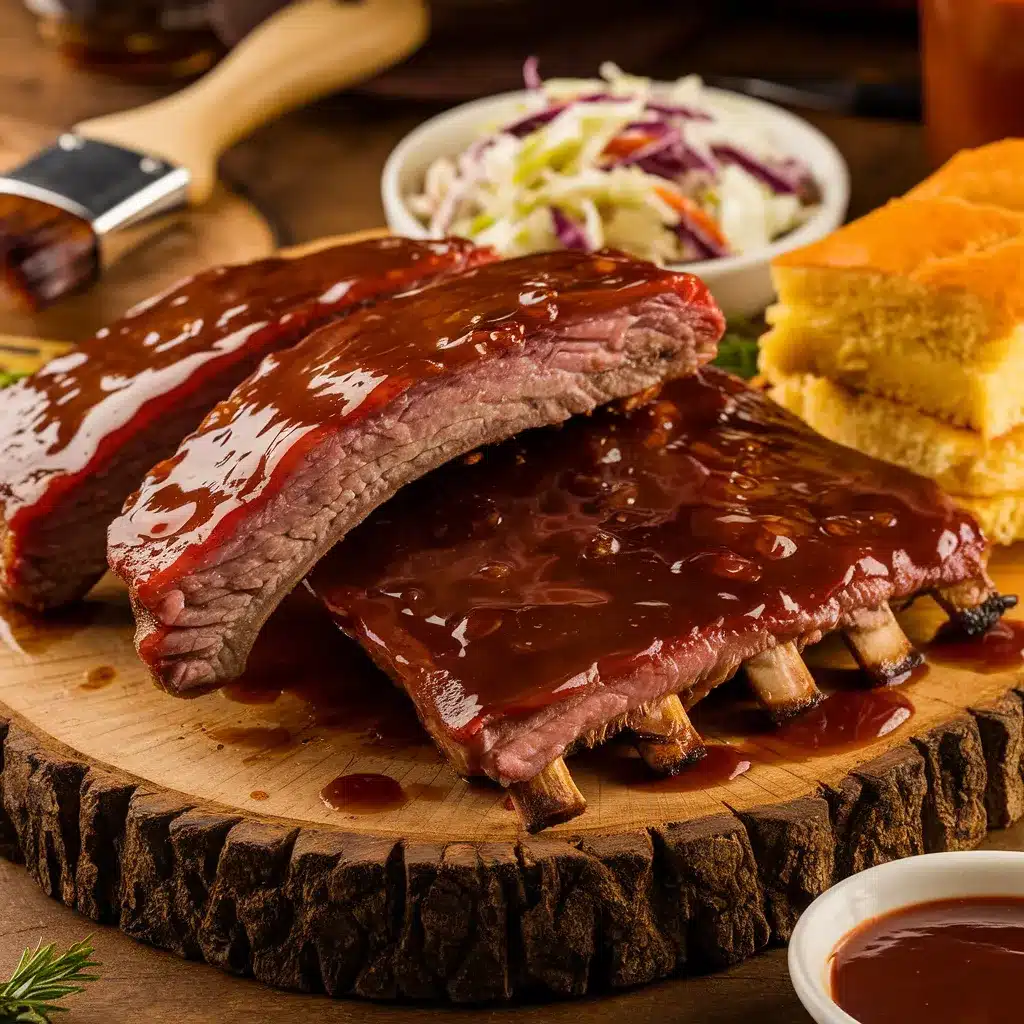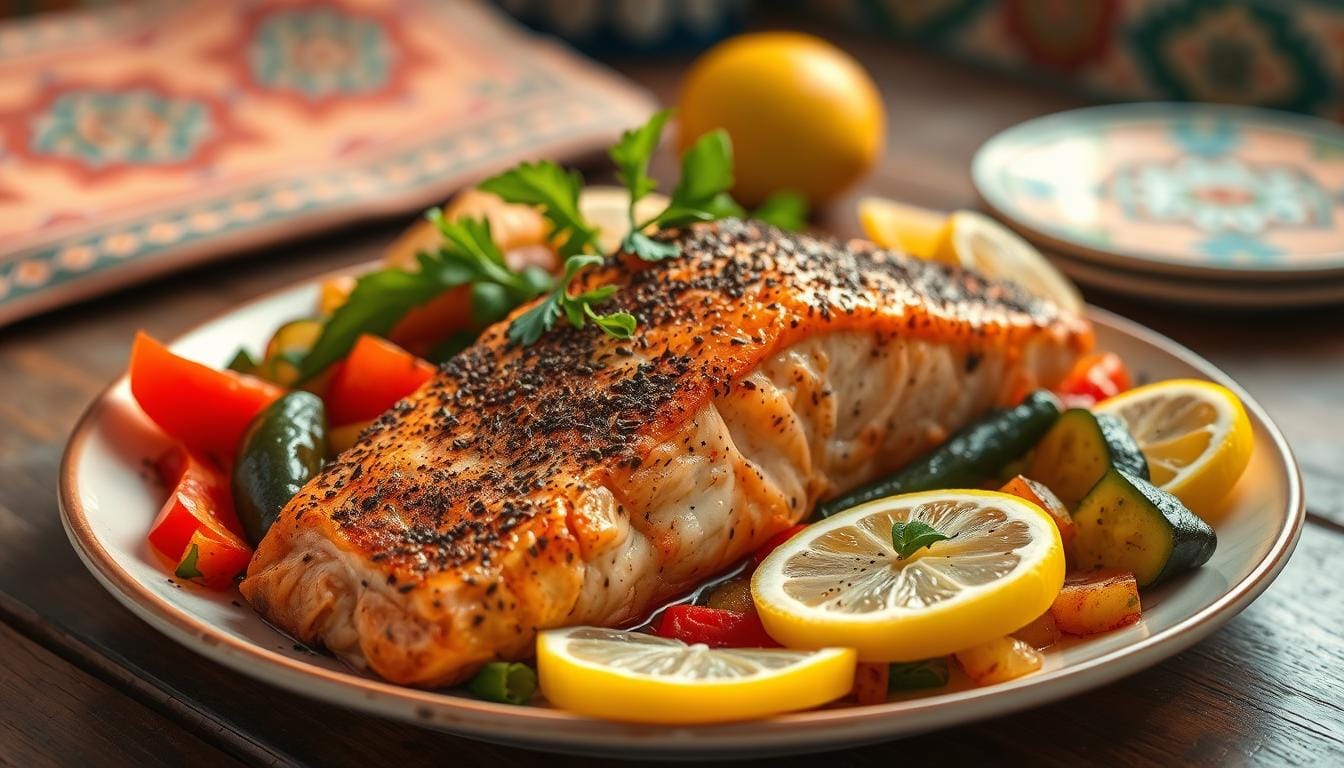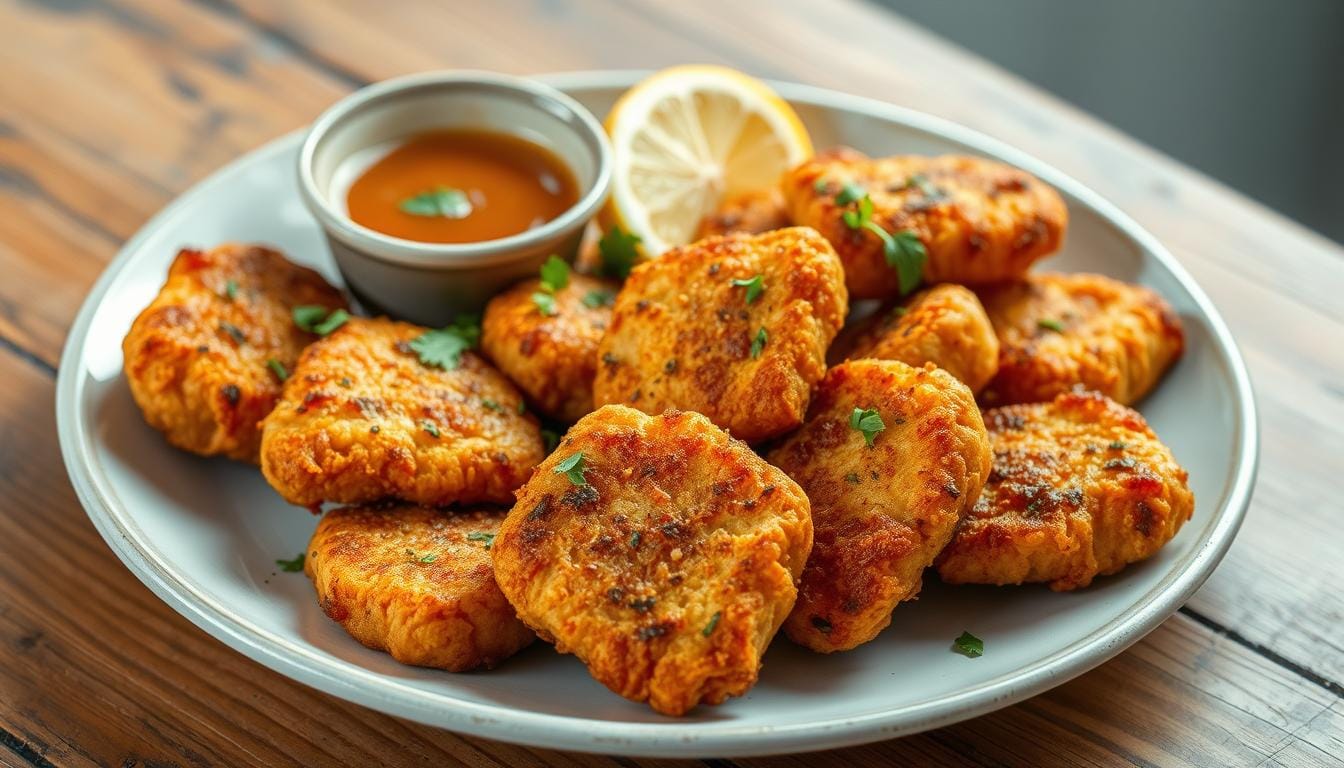Red vs Pink Canned Salmon for Loaf: Choosing the Best Option for Flavor and Texture
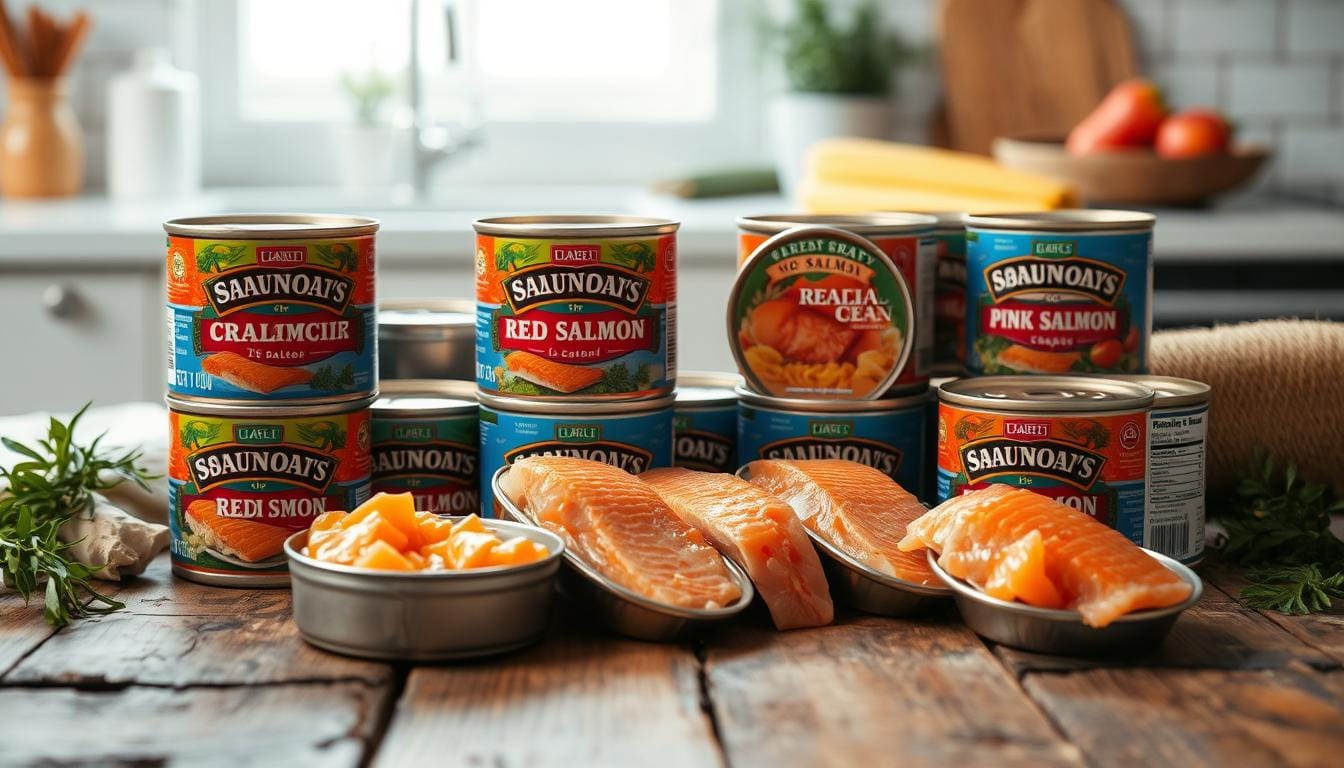
I love cooking at home and always look for ways to make meals special. Canned salmon is a great find for quick meals or special dishes. But, choosing between red (sockeye) and pink canned salmon is key for a perfect salmon loaf.
Table of Contents
Understanding Canned Salmon Varieties
When choosing canned salmon, you have two main options: wild-caught and farm-raised. Each type has its own unique qualities that can change how your salmon loaf turns out.
Wild-Caught vs. Farm-Raised Options
Wild-caught salmon, like sockeye, are the top choice. They live in their natural homes and eat what they find. This makes them taste bold, slightly sweet, and nutty.
Farm-raised salmon, on the other hand, are raised in controlled places. They eat processed food. This makes them taste milder and more delicate, but they cost less.
Key Differences Between Red and Pink Salmon
The main difference between canned salmon is their color. Red salmon, or sockeye, gets its bright color from their diet. This color is often preferred for its beauty.
Pink salmon, however, has a lighter color. Its taste is also different, being bolder and nuttier than pink salmon’s milder flavor.
Seasonal Availability and Sourcing
The availability of wild-caught salmon, especially red, depends on fishing seasons. This affects how much and how expensive canned red salmon is. Pink salmon, however, is easier to find all year, making it a good choice for consistent use.
| Characteristic | Wild-Caught Salmon | Farm-Raised Salmon |
|---|---|---|
| Flavor Profile | Bold, slightly sweet, nutty | Milder, more delicate |
| Color | Deep, rich red (sockeye) | Lighter pink |
| Sustainability | More environmentally friendly | Can have a higher environmental impact |
| Availability | Seasonal, depending on fishing periods | Generally available year-round |
| Price | Typically more expensive | Generally more affordable |
The Rich Heritage of Red Salmon (Sockeye)
The sockeye or red salmon is a true treasure in canned salmon. It’s known for its deep flavor and firm texture. These qualities make it perfect for salmon loaves.
Sockeye salmon, also called red salmon, is packed with nutrients. It has more omega-3 fatty acids than pink salmon. A 3.5-ounce serving has 1.7 grams of these fats, while pink salmon has 0.8 grams.
But sockeye salmon is more than just healthy. Its bright red color and flaky texture make salmon loaves look and taste great. The dense flesh of sockeye salmon keeps the loaf firm and appealing.
“Sockeye salmon, also known as red salmon, is prized for its deep color and strong flavor. It has a higher content of omega-3 fatty acids, with 1.7 grams per 3.5 oz serving compared to pink salmon’s 0.8 grams.”
The history of sockeye salmon is tied to the Pacific Northwest’s waters. It thrives in the cold, nutrient-rich streams. Its seasonal availability makes it even more special.
Pink Salmon: A Versatile Alternative
Pink salmon, also known as humpback salmon, is a tasty choice. It has a milder taste and a flakier texture than red salmon. This makes it a great addition to many dishes, adding a delicate touch.
Habitat and Natural Characteristics
Pink salmon live in the cool waters of the North Pacific Ocean and its rivers. They have a distinctive hump and are larger than other Pacific salmon. Their flesh is lighter, less oily, and softer, making them perfect for delicate recipes.
Common Uses in Cooking
- Salmon cakes and patties: The flaky humpback salmon is great for making tender, flaky fish textures in croquettes, burgers, and cakes.
- Dips and spreads: Canned pink salmon is a low-cost, convenient ingredient for creamy, protein-packed dips and spreads.
- Casseroles and baked dishes: The mild flavor of pink salmon blends well into casseroles, quiches, and other baked dishes without overpowering other ingredients.
- Salads and sandwiches: Pink salmon’s delicate texture is excellent for adding to fresh salads, wraps, and sandwiches.
Pink salmon is a versatile and affordable choice. It offers many culinary possibilities for home cooks, making it a great alternative to red salmon.
Nutritional Comparison: Red vs Pink Salmon
Both red (sockeye) and pink canned salmon are packed with nutrients. They differ in omega-3 content and protein levels, which are important to consider.
Red salmon, or sockeye, has more omega-3 fatty acids. A 3.5-ounce serving has 1.7 grams of these fats. Pink salmon has 0.8 grams in the same amount. Red salmon is great for those looking to increase their omega-3 intake and heart health.
Both types of salmon are high in protein. Red salmon has 22 grams per 3.5-ounce serving. Pink salmon has 20 grams. They’re both excellent for protein-rich meals and a healthy diet.
| Nutrient | Red Salmon (Sockeye) | Pink Salmon |
|---|---|---|
| Omega-3 Fatty Acids | 1.7 grams | 0.8 grams |
| Protein | 22 grams | 20 grams |
| Calories | 182 | 171 |
| Total Fat | 10 grams | 8 grams |
Choosing between red or pink canned salmon depends on your taste and diet needs. Both offer salmon nutrition and health benefits.
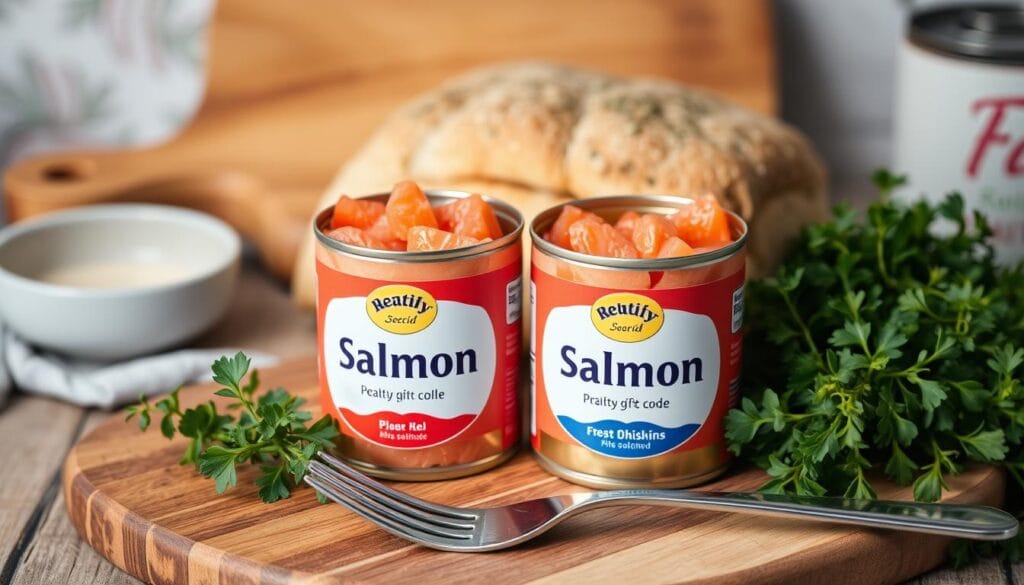
Texture and Consistency Differences
Choosing the right canned salmon is key to a perfect salmon loaf. Red salmon’s firm flesh keeps the loaf’s shape, making it neat and tidy. Pink salmon, with its softer texture, results in a delicate loaf. It might need extra ingredients to hold together well.
Impact on Loaf Structure
Red salmon’s dense texture is great for keeping the loaf’s shape. It makes slicing and serving easy. Pink salmon, being softer, can make the loaf more fragile. It might need extra care when serving.
Moisture Content Considerations
The moisture in canned salmon affects the loaf’s texture. Red salmon holds its shape better. Pink salmon might need breadcrumbs or eggs to stay moist and cohesive. Finding the right mix of ingredients ensures a tender yet sturdy loaf.
“The texture of the canned salmon is the foundation for a successful salmon loaf. Understanding the differences between red and pink salmon can help you create a truly mouthwatering dish.”
Price Points and Value Analysis
Canned salmon is a great choice for those looking for affordable protein. Both red (sockeye) and pink salmon are packed with nutrients and are easy on the wallet. They are cheaper than fresh salmon, making them a good choice for everyday meals.
Pink salmon is often the cheaper option. It’s less expensive than red salmon but still rich in protein, omega-3s, and other nutrients. For those on a budget, pink canned salmon is a smart and affordable choice.
| Canned Salmon Variety | Average Price per Pound | Nutritional Value | Cost-Effectiveness |
|---|---|---|---|
| Red (Sockeye) Salmon | $4.99 – $6.99 | Highest in omega-3s and overall nutrients | More expensive, but excellent quality |
| Pink Salmon | $2.99 – $4.99 | Excellent source of protein and omega-3s | Most budget-friendly canned salmon option |
When choosing canned salmon for a salmon loaf, consider the cost and texture. Pink salmon is cheaper, but red salmon’s firmer texture makes for a better loaf. Your choice will depend on your taste, budget, and recipe needs.
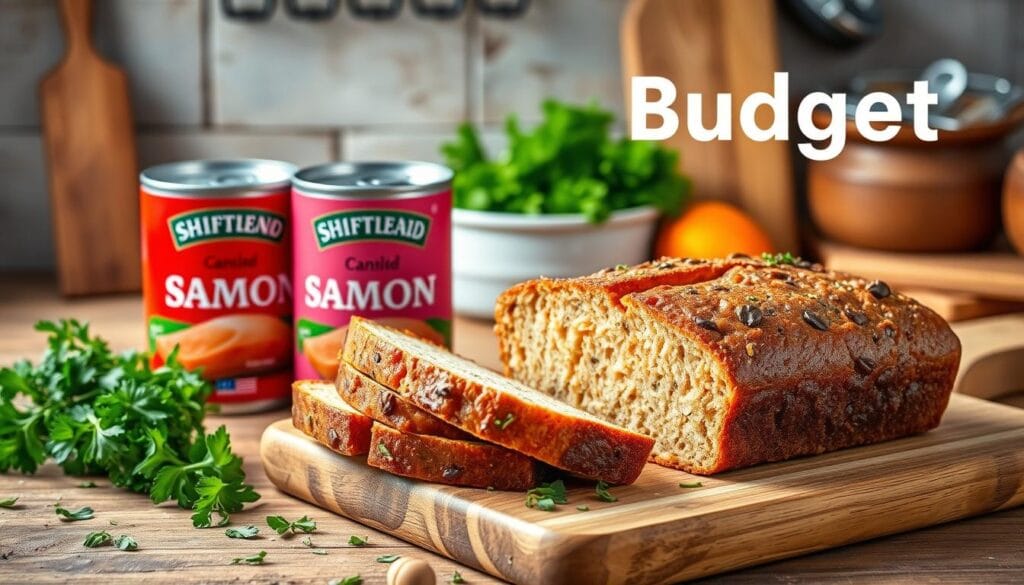
red vs pink canned salmon for loaf
Choosing between red and pink canned salmon can greatly affect your salmon loaf. Red salmon has a bold flavor and firm texture, making it perfect for a hearty loaf. Pink salmon, with its milder taste and softer texture, adds a delicate touch to your dish.
Best Practices for Selection
For the best taste, pick high-quality, wild-caught red salmon. Look for sustainable fishing certifications to support your values. If you can, choose the best brand of canned red salmon you can afford. The difference in taste and texture is worth it.
If red salmon is too expensive or hard to find, pink salmon is a good alternative. It may not be as strong, but it still adds a nice flavor to your loaf.
Storage Considerations
- Keep unopened cans of salmon in a cool, dry place, away from sunlight and heat.
- After opening, put unused salmon in an airtight container and refrigerate for 3-4 days.
- Cooked salmon loaf can be frozen for up to 3 months for year-round enjoyment.
By following these tips for canned salmon selection and seafood storage, you’ll make a salmon loaf that’s both tasty and satisfying.
Cooking Techniques for Perfect Salmon Loaf
Making a tasty salmon loaf needs a few important steps for a moist and flavorful dish. Whether you pick red or pink canned salmon, the steps are the same. But, red salmon might need a bit longer in the oven because it’s firmer.
First, heat your oven to 325-350°F. In a big bowl, mix the drained salmon with breadcrumbs, diced onion, and your favorite seasonings. For a lighter texture, beat the egg whites separately and then mix them into the salmon.
- Grease a loaf pan with butter or non-stick spray to avoid sticking.
- Put the salmon mix into the pan, pressing it down gently to make it compact.
- Bake for 45-55 minutes, or until the top is golden.
- Let the loaf cool a bit before slicing and serving.
The baking time might change based on the salmon type. Red salmon, or sockeye, might need 5-10 more minutes to be moist and well-cooked.
“The key to a great salmon loaf is in the technique – a light touch with the ingredients and a watchful eye on the baking time.”
By following these easy steps, you’ll make a delicious and attractive salmon loaf. It’s sure to wow your family and friends.
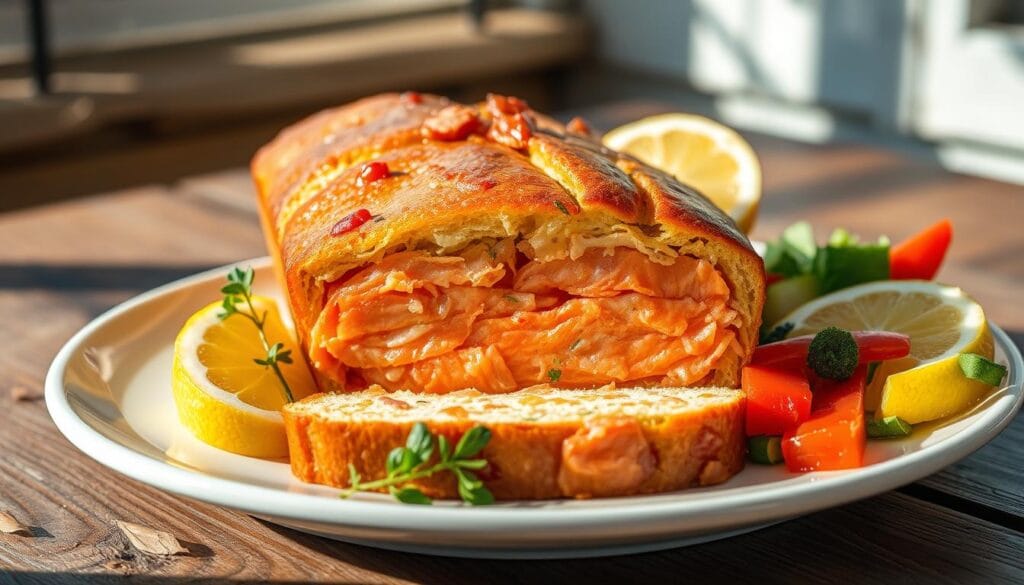
Flavor Profiles and Seasoning Tips
Make your salmon loaf taste amazing with herbs and spices. Red salmon goes well with strong flavors like dill, garlic, or cayenne pepper. Pink salmon, on the other hand, is great with lighter tastes like lemon, parsley, or tarragon.
Try different flavors to make your salmon loaf stand out. For a New England flavor, use Old Bay seasoning. For something international, add curry powder for an Indian twist. You can also try Worcestershire sauce, rice vinegar, or Parmesan cheese to boost the flavor.
Complementary Herbs and Spices
- Red Salmon: Dill, garlic, cayenne pepper
- Pink Salmon: Lemon, parsley, tarragon
Regional Flavor Variations
- New England Twist: Old Bay Seasoning
- Indian-Inspired: Curry Powder
- Versatile Additions: Worcestershire sauce, rice vinegar, Parmesan cheese
Experiment with these ingredients to make your salmon loaf special. Canned salmon is versatile, so let your creativity run wild.
Environmental Impact and Sustainability
Choosing between red (sockeye) and pink salmon canned fish matters for our planet. It’s key to pick sustainable fishing and eco-friendly seafood for our ocean conservation.
Wild-caught salmon, like sockeye, are better for the environment than farmed fish. They have strict rules to keep their numbers healthy. This helps keep the ocean’s balance and protects fish homes.
- Over 90 percent of global fish stocks are either over-fished or completely exhausted, underscoring the importance of responsible sourcing.
- Wild-caught fish generally have less exposure to contaminants like mercury and PCBs compared to farmed fish.
- Microplastics found in fish can contain over 16,000 chemicals, a quarter of which are known to be toxic to human health.
When buying canned salmon, check for labels that show sustainable fishing or certifications from groups like the Marine Stewardship Council. Choosing this way helps protect our ocean conservation and fish health.
“Consuming 250 to 500 milligrams of EPA and DHA per day can lead to a 36% relative risk reduction of cardiovascular death.”
By picking eco-friendly seafood like wild-caught canned salmon, you get a tasty and healthy snack. You also help protect our oceans for the next generations.
Health Benefits and Dietary Considerations
Red and pink canned salmon are packed with health benefits. They are full of omega-3 fatty acids, which are good for your heart and brain. Salmon also has high-quality protein, giving your body all the amino acids it needs.
Canned salmon is great because it’s low in carbs. This makes it perfect for many diets, like low-carb or paleo. Plus, canned salmon with bones adds extra calcium, helping your bones and teeth stay strong.
- Salmon is a heart-healthy fish due to its high omega-3 content.
- Canned salmon is a low-carb protein source suitable for many dietary plans.
- Salmon with bones offers additional calcium for improved bone health.
When picking between red (sockeye) and pink salmon, think about what you like and need. While they’re similar, there might be small differences in omega-3s, texture, and taste. Talk to a doctor to find the best choice for your health goals.
“Salmon is a nutritional powerhouse, delivering high-quality protein, heart-healthy omega-3s, and other essential nutrients. Whether you opt for red or pink, canned salmon is a versatile and convenient addition to a balanced diet.”
Serving Suggestions and Meal Planning
Salmon loaf is great with many sides and flavors. Try it with green salad, quinoa salad, or roasted vegetables. For more taste, add tartar sauce, Greek yogurt, or a squeeze of lemon juice.
It’s also good for a healthy meal plan. It’s full of protein and nutrients. Serve it with whole grains and fresh vegetables for a complete meal. You can also use leftover salmon loaf in sandwiches or salads.
| Salmon Loaf Sides | Seafood Pairings | Healthy Meal Ideas |
|---|---|---|
| Crisp green salad | Tartar sauce | Salmon loaf with quinoa and roasted vegetables |
| Quinoa salad | Greek yogurt | Salmon loaf sandwich with avocado and sprouts |
| Roasted vegetables | Lemon juice | Salmon loaf and mixed greens salad with citrus vinaigrette |
Pairing salmon loaf with healthy sides, seafood pairings, and balanced meal ideas makes tasty and nutritious dishes. These dishes will please your taste buds and help your health.
Conclusion
Choosing between red (sockeye) or pink canned salmon for your salmon loaf is a great option. Both have their own benefits. Red salmon has a bolder flavor and firmer texture. Pink salmon, on the other hand, is milder and softer.
When picking canned salmon, think about nutrition, texture, and budget. Try different recipes and seasonings to find your favorite. Canned salmon is a canned salmon benefits and a nutritious meal options for everyone.
Whether you prefer the bold red salmon or the subtle pink, canned salmon is versatile. It can be used in many tasty dishes. Let your creativity shine and make your own special salmon loaf.
FAQ
Which is better, red or pink canned salmon?
Red canned salmon (sockeye) has a richer flavor and firmer texture, while pink salmon is milder and more affordable, making it a personal preference.
What kind of canned salmon is best for patties?
Pink salmon is often preferred for patties due to its mild flavor and softer texture, making it easy to mix and shape.
Should salmon be red or pink?
Salmon can be red (sockeye) or pink (pink salmon), depending on the species, with no major difference in nutritional value.
What is canned pink salmon used for?
Canned pink salmon is versatile and used in recipes like salmon patties, salads, casseroles, or as a protein addition to sandwiches.
Have you tried this recipe?
Cooking made joyful with Perky Recipes

